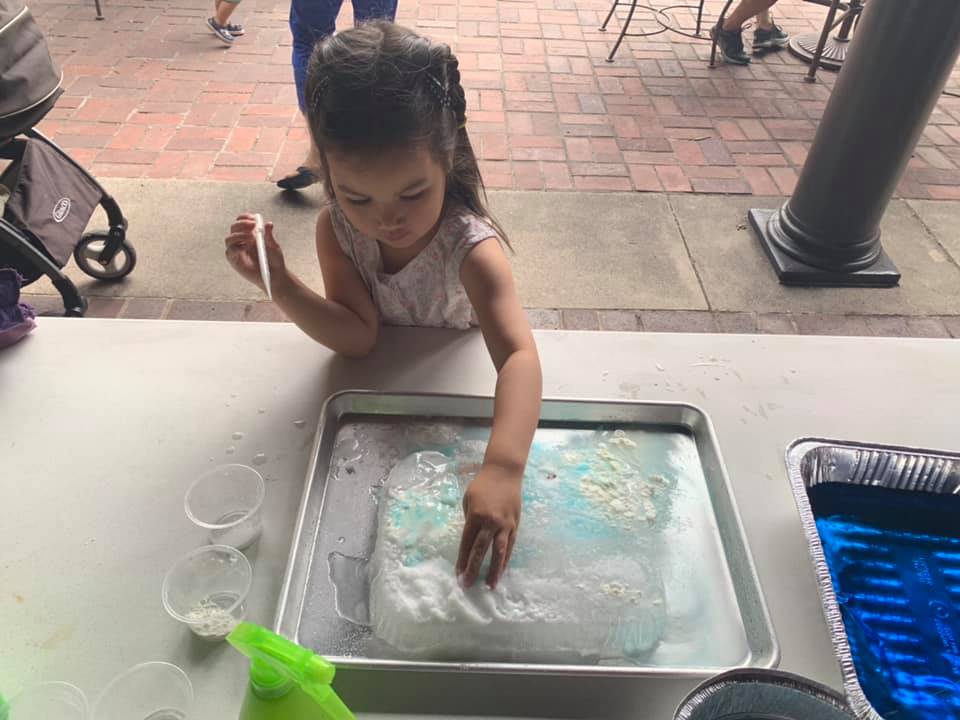
Preschool STEAM (for children ages 2-6) is all about having fun with science, technology, math and art! There is no right or wrong way for children to experiment – the fun and learning comes from the doing! Early childhood research shows us that little hands and minds learn best when at play.
For our July 2019 STEAM adventure, we tried to figure out what would make ice melt the fastest – it was an exploration into the freezing and melting points of ice!
Preparation:
Materials:
- Plastic containers (various sizes)
- Small plastic dinosaur toys or other small plastic figurines, shells and smooth stones/rocks
- Water to place in containers
- Spray bottles (filled with warm water)
- Table salt or rock salt
- Baking soda (optional)
- Cornstarch (optional)
- Cookie sheets or large aluminum trays
- Small plastic pipettes
- Blue food coloring (optional)
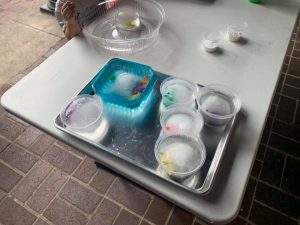
The Night Before
The night before the experiment, place plastic figurines (dinosaurs or other), shells and stones/rocks in small or large plastic or aluminum containers. Cover them with water and place in a freezer overnight. You can fill several small plastic containers or a few large aluminum containers with water. It all depends on the size of your freezer and the number of children who will be participating.
The next day (right before it is time to conduct the experiment) take out the frozen containers. Have cookie sheets or round/square/rectangular aluminum trays (or both) on hand. These will help catch the water when the ice starts to melt.
As each child arrives they can choose one of the frozen containers. They can then place the container upside down on a cookie sheet/aluminum tray. For a fun effect and to help the children see how quickly the ice is melting, have them add a few drops of blue food coloring to the tray.
Eventually the ice block will slip out and the child can get to work trying to determine which of the available substances (salt, rock salt, baking soda or cornstarch) will make the ice melt faster. Of course there is an incentive – the colorful toys and sea shells peeking through the ice!
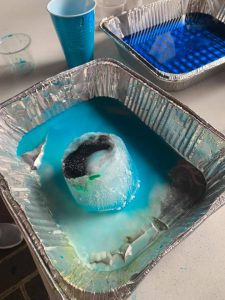
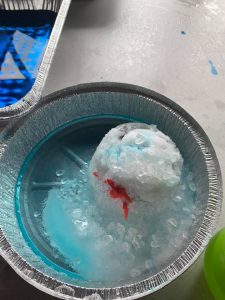
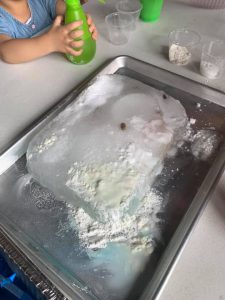
Credit for experiment idea: Happy Hooligans
Objective:
To learn about ice and why some materials make ice melt faster and others keep it from melting.
The Science Behind It
Science:
- Some materials have insulating properties (flour, cornmeal), and others will make ice melt faster (water, salt). Salt lowers the freezing point
- Kids will learn about the freezing point of water, and what happens when different materials touch ice.
In a nutshell, salt is a great ice melter because it causes “freezing point depression.”
This means that salt helps in lowering the freezing point and, consequently, the melting point of water (the main component of snow and ice).
It must be noted, however, that salt alone can’t melt ice.
The salt must be in a solution with liquid water in order for this science principle to be obeyed.
- If the water is mixed with salt, the freezing temperature of the solution is lower than 32 F. The salt slows impedes the ability of the water molecules to form solid ice crystals. The degree of freezing point depression depends on how salty the solution is.
Credit: ThoughtCo.
The Project: Make that ice melt!
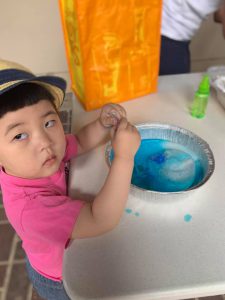
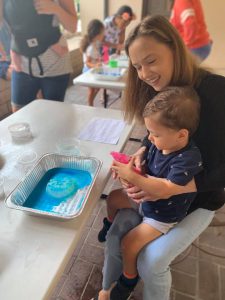
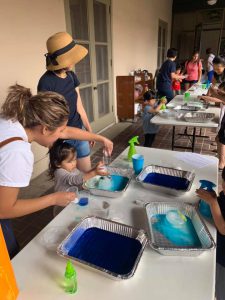
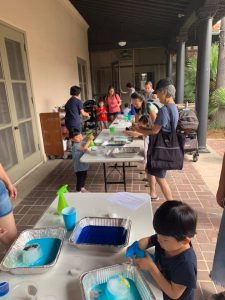
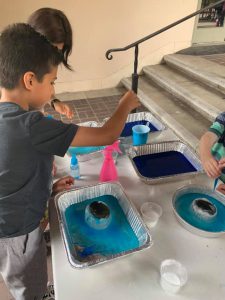
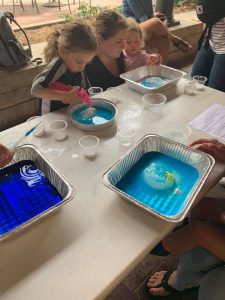
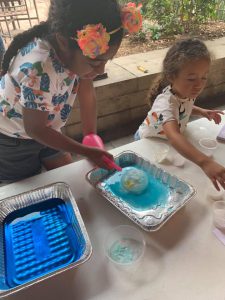
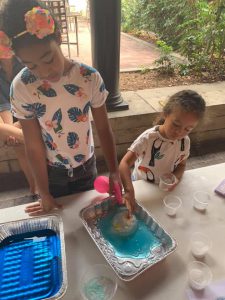
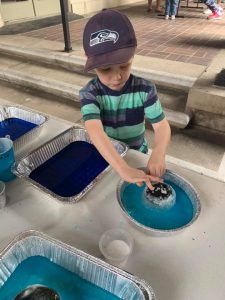
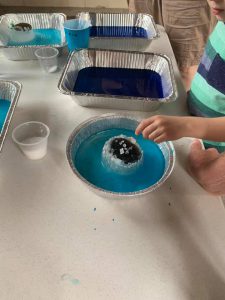
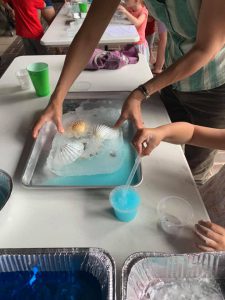
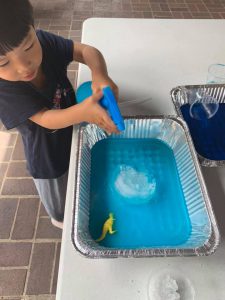

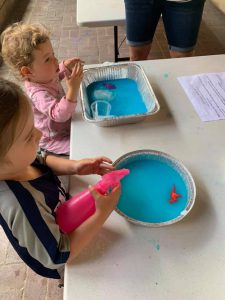
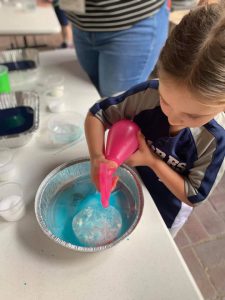
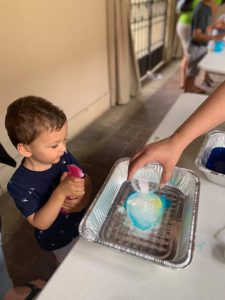
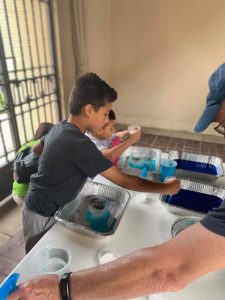
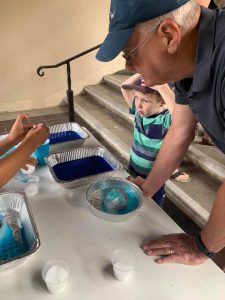
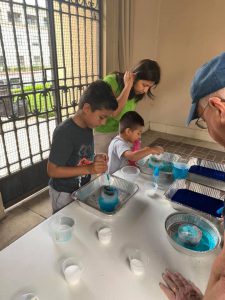
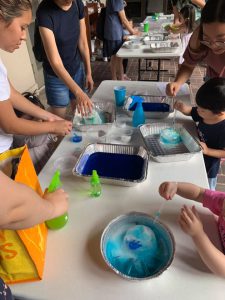
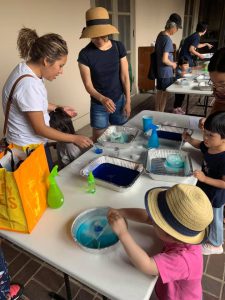
TRY THIS AT HOME!
Put two ice cubes in two glasses. Put a teaspoon of table salt on one ice cube. Which ice cube melts faster, the one with the salt or the one without the salt? Why does this happen?
The ice cube without salt melts because the air around it is warmer than 32 degrees F. The salted cube melts faster. When you add salt it dissolves into the water of the ice cube. Salt water freezes at a lower temperature than the 32 degrees F at which freshwater freezes.
The difference between the air temperature and the freezing point of salt water is bigger than the difference between the air temperature and the freezing point of freshwater. This makes the ice with salt on it melt faster.
Credit: It’s ESP – Science Time http://www.espsciencetime.org/SaltandIce.aspx
Join us at the Children’s Room patio/Central Library on August 26 from 10:30-11:30 a.m. for more STEAM exploration!